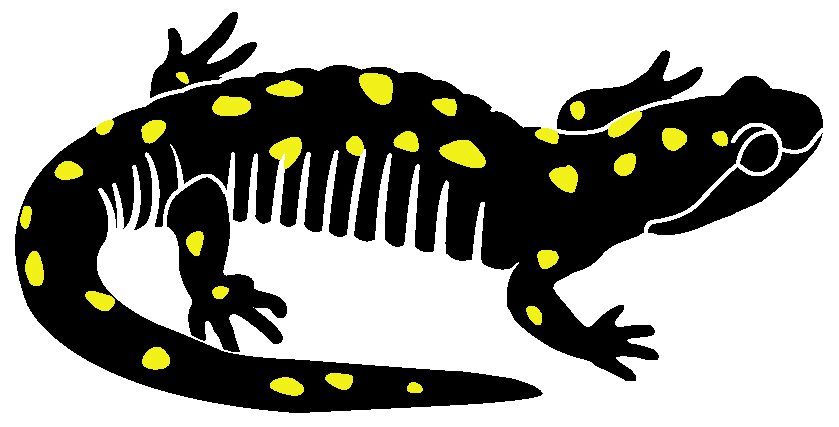Spadefoot Toad
Adults
Scaphiopus holbrookii holbrookii

The spadefoot toad (1.8-2.5") is a most secretive animal seldom encountered other than during brief, unpredictable breeding bouts after rain events. It is a lightly warted toad with two wavy yellow lines on a dark brown to gray body. Unlike any other frog or toad in MA, the pupil is vertical. It is most obvious when viewed in bright light. On each hind foot is the sharp, black tubercle used for digging, from which this uncommon species derives its name.
Adults are superior diggers and inhabit burrows from which they venture out on rainy nights to feed. It is on these wet nights that they might be seen crossing roads or in fields and woodlands. Otherwise, the spadefoot is seldom observed except for the few days when they are at temporary pools for breeding. The species is adapted to dry conditions and may remain underground for weeks at a time. During drought periods, the spadefoot encapsulates itself in an underground mud chamber to prevent moisture loss and remains there until conditions improve. Typical habitat for the toad is sandy or loose loamy soil. They have been found in scattered areas of the coastal plain of eastern MA from Plum Island (Newburyport) through the southeastern part of the state and on to Cape Cod and the Islands. However, the northeastern population of spadefoot toad has become entirely isolated from southeastern populations. None currently is known from any of the towns between Newburyport and Bristol County. They are also known from areas in the Connecticut River valley.
Larvae
Eggs
Breeding seems to be in response to very heavy rains rather than being seasonal. The exact conditions required are not well understood and populations may go several years between breeding events. Following heavy rains sometime from mid-April to July, spadefoots emerge from their burrows and go to nearby pools. These breeding pools might be typical vernal pools or more temporary pools formed in fields and low areas as a result of the rain. The males chorus with repetitive, short, low-pitched trailing calls of “Errrr.” When a female approaches, the male clasps her just above the hind legs. In amplexus, together they swim underwater where the female attaches her eggs to plant stems as they are released and fertilized. Over 2,000 eggs are laid in sticky bands among those of other spadefoots. Emergence, chorusing, and egg-laying take place on a single night. By the following day, the adults have returned to their burrows.
Eggs hatch within only a few days. The tadpoles feed on algae and carrion and develop rapidly. Metamorphosis into a toadlet may take place in as little as 2-3 weeks if conditions are appropriate. Toadlets move away from the temporary pool, construct their own burrows, and begin the secretive life of the spadefoot toad.
Little is known about the actual distribution of spadefoot toads in MA. The NHESP database lists fewer than 50 occurrences of the spadefoot in the entire state, making it our rarest amphibian. Their secretive nature, rapid breeding and development, and overall rarity make them difficult for researchers to document. Many of the listed occurrences are for an individual toad and do not represent a known breeding population. For example, a dried, flattened spadefoot roadkill was found on Plum Island in the early 1970’s. It was only in 1998 that a breeding population was confirmed on Plum Island when a breeding chorus was heard and recorded. If you find a spadefoot toad or breeding site, photograph the animal, record the mating call, take good notes as to the animal’s location and notify the NHESP immediately. The spadefoot toad is a Threatened Species in MA.











